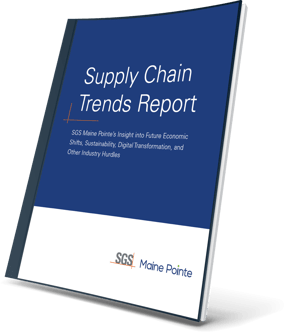Supplier performance management
Three tactics to a more resilient supply chain
When procurement is purely transactional—sending out orders, paying invoices—supplier performance management is a foreign concept. A mature, strategic procurement function manages suppliers by:
- Defining your goals and needs and communicating them to suppliers
- Enabling informed decisions about suppliers and increasing visibility into the supply chain.
- Taking steps to reduce the risk if a legacy supplier fails or a changes priorities.
Supplier performance management delivers a more resilient supply chain that is also more collaborative and visible.
Define your goals and needs and communicate them to suppliers
You start building an equal relationship with suppliers by defining your needs and goals so that suppliers can meet them. Clear communication and KPIs also enable you to quickly detect variances and deal with them.
If you are clear about your own needs, suppliers will be more open about their capacity, capability, and any communication problems may be interfering with their ability to serve you.
The better you know your suppliers, the better you can negotiate with them. For example, you may offer a volume incentive to a favored supplier. Negotiations change in tone from confrontational to win-win.
Enable informed decisions and increase visibility into the supply chain
For one manufacturing company, the suppliers had become the source of all knowledge about custom fabrications, limiting the company’s ability to make changes. Moreover, multiple daily change orders from engineering had suppliers threatening to leave. A rigorous procurement management operating system (PMOS), new KPIs, a revised relationship with procurement and engineering, and the addition of 19 new suppliers enabled the company to take control of its legacy knowledge and drive savings: $9.35 million EBITDA in one year.
A mature procurement function is a strategic partner and should have a seat at the decision making table. It will help you to:
- Determine your make identity: what should you manufacturer in house and what should be sourced?
- Know whether you need alternative or additional sources: has your supply chain become vulnerable to the whims of one country or a catastrophe along one route?
- Understand your spend and cost of goods sold (COGS): you need accountability and accurate records tied to your internal KPIs and goals in order to negotiate successfully.
- Anticipate the effect on procurement of decisions made up and down the supply chain: the entire plan-make-buy-move supply chain is a continuum.
- Develop trust with suppliers: they may become more willing to share technology, data, and ideas (for example, more cost-effective alternatives), giving you more visibility and confidence in your supply chain.
- Build collaboration with suppliers: driving your suppliers into bankruptcy or overwhelming them with interference from multiple sources benefits no one.
Take steps to reduce risk
Supply chain risks come in many forms. You may need to reduce carbon emissions from shipping, better balance supply and demand, avoid regions under conflict, establish alternatives if a supplier fails, and anticipate countless other possibilities. Supplier performance management includes ways to reduce those risks through:
- Ally sourcing
- Optionality.
Ally-sourcing identifies suppliers that can support your commercial and operational goals while also limiting the environmental, social, economic, and political risks.
Optionality ensures that you have on-shore, near-shore, and off-shore suppliers so that you have alternatives if any one part of your supply chain fails.
Both ally-sourcing and optionality evaluate your suppliers and the countries where they are located against such considerations as cooperation with tariffs and regulations; availability of a capable workforce; social justice; proximity to warehouse or customers; and protection of intellectual property.
A mature procurement department is a partner with planning, operations, logistics, and financial leaders in building a collaborative environment based on your goals and needs and those of your suppliers. It helps ensure that upstream decisions related to suppliers do not create chaos downstream, and vice versa. It uses ally-sourcing and optionality, among other tactics, to reduce risk and increase resiliency in your supply chain. Supplier performance management give your company the support, knowledge, control, and resiliency that lead to lower costs and higher profits.
Related Resources
Ready to take hold of your supplier performance management?

Talk to us
From rapid sprints for short-term gains to transformation for competitive advantage we are here to get you there.
Schedule a discussion
Submit this form to speak to an SGS Maine Pointe representative.
Prefer a call? (781) 934 - 5569




